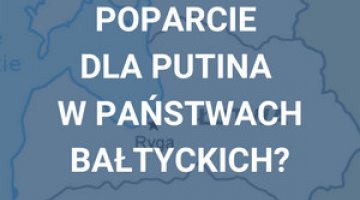Analyses
Estonia gets closer to the euro
The European Commission (EC) in its Convergence Report, published on 12 May, put forward a motion about Estonia joining the euro zone in 2011. The final decision in this issue will be taken by the finance ministers of the EU countries at the beginning of July this year but it seems that the switch from the Estonian kroon to the euro from 1 January 2011 is already sealed. The introduction of the euro will be a great success of the centre-right government of Andrus Ansip and may contribute to the victory of the ruling parties in the parliamentary election planned for March 2011.
The EC in its report states that Estonia has succeeded in fulfilling the Maastricht criteria and thus is submitting the motion for it to accept Estonia into the euro zone in 2011. In its document the EC stresses the determination of the Estonian government which despite a 14% recession managed last year to bring the budget deficit below the required 3% of GDP. Tallinn, thanks to its austerity policy, and the lowest public indebtedness in the EU is nowadays presented in Europe an example of financial responsibility. On the other hand, a combination of tough reforms – the austerity policy – with the introduction of the euro has undoubtedly weakened discontentment in Estonian society and ensured the ruling coalition relatively stable support from pro-European constituents.
Should there be an effective introduction of the euro and a forecast improvement of the economic situation, the parties that form the government of Andrus Ansip will stand a great chance of winning the parliamentary election in 2011.
Despite the deep crisis of the euro, its adoption constantly remains a strategic objective of the current Estonian government and is part of Tallinn's firm policy of integration and an active participation in the structures of cooperation of Western countries. This policy enjoys the support of the majority of Estonians.
For Estonia's open economy the adoption of the euro should also bring about positive economic consequences, among them lower transaction costs in external trade. One of the first results of the expected introduction of the euro is investor optimism on the Estonian stock exchange – prices have risen by over 40% since the beginning of the year, which is twice as much as on stock exchanges in Vilnius and Riga. <pas>




